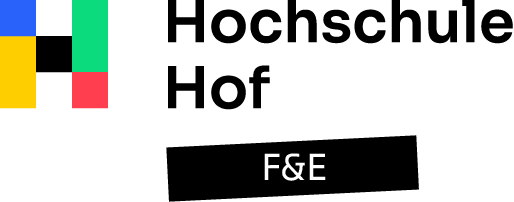
Spatial Hypertext for End-User Development Tools
Roßner, Daniel; Atzenbeck, Claus (2018)
Proceedings of the 1st Workshop on Human Factors in Hypertext (HUMAN '18), 9–15.
DOI: 10.1145/3215611.3215612
Open Access Peer Reviewed
Software applications become more and more dominant in our daily life and work. However, it is very difficult to provide sophisticated tools for all arising use cases. End-User Development (EUD) is a term that describes the development of applications by end users rather than professional developers. This enables them creating highly specialized solutions. End users are laypersons when it comes to building software, therefore they need appropriate tools for managing the whole development process. This includes designing, implementing and deploying applications. While there are already various tools available, we focus on a recommendation feature for graphical EUD tools, utilizing their spatial hypertext capabilities. In this paper we provide an overview of some common issues such tools are often struggling with. We explain how visually analyzing the workspace, parsing an implicit spatial hypertext and eventually presenting recommendations may tackle them. We further describe the project HEIMDALL in detail, especially the way of generating recommendations for software modules with the aim to raise users' awareness. Furthermore, we discuss the use of such a system that reaches a similar understanding of relationships between software modules as users have. Finally, we point to open issues that still need to be addressed to improve results and their presentation.
Revisiting Hypertext Infrastructure
Atzenbeck, Claus; Schedel, Thomas; Tzagarakis, Manolis; Roßner, Daniel; Mages, Lucas (2017)
Atzenbeck, Claus; Schedel, Thomas; Tzagarakis, Manolis; Roßner, Daniel...
Proceedings of the 28 th ACM Conference on Hypertext and Social Media (HT'17), 35–44.
DOI: 10.1145/3078714.3078718
Open Access Peer Reviewed
Specialized systems aiming at offering hypertext functionality in users' computing have been discussed since the early days of hypertext. However, with the claim to also support other structure domains than node-link structures, hypertext systems had to overcome some challenges. Researchers came up with component-based approaches and low level structure services.
Due to the raising omnipresence of the Web, research on traditional hypertext systems has been fading out over the past decade. This paper focuses again on hypertext infrastructures and goes beyond ongoing Web discussions. Based on lessons learned from well thought through previous work, we present a novel design for multi-structure supporting, general purpose hypertext systems that can be used in a series of application domains. The system provides intelligence analysis which is needed for sophisticated user support. We argue that this lets us use the hypertext system also as a visual analytics tool. Furthermore, for demonstration purposes we describe the use of the system in combination with a Web-based software engineering platform, which is part of the ongoing project ODIN.
Spatio-Temporal Parsing in Spatial Hypermedia
Schedel, Thomas; Atzenbeck, Claus (2016)
Proceedings of the 27th ACM Conference on Hypertext and Social Media (HT'16), 149–157.
DOI: 10.1145/2914586.2914596
Peer Reviewed
Spatial hypertext represents associations between chunks of information by spatial or visual attributes (such as proximity, color, shape, etc.). This supports expressing information structures implicitly and in an intuitive way. However, automatic recognition of such informal, implicitly encoded structures by a machine (a so-called spatial parser) is still a challenge. Conventional parsers are conceptually restricted by their underlying source of information. Due to this limitation there are various possible structures that cannot be recognized properly, as the machine has no means to detect them. This inevitably limits both the quality of parser output and hence parser performance. In this paper we show that considering temporal aspects in spatial parser design will lead to significant increase in parsing accuracy, detection of richer structures and thus higher parser performance. We call machines that consider such spatial and temporal information spatio-temporal parsers.
For the purpose of providing evidence, parsers for recognizing spatial, visual, and temporal object relations have been implemented and tested in a series of user surveys. One aim was to find out how "close" the machine interpretetation of structures get to human interpretation. It turned out that in none of the test cases pure spatial or visual parser could outperform the spatio-temporal parser. Instead, the spatio-temporal parser was able to compensate limitations of conventional parsers. Furthermore, we have statistically tested parsing accuracy. The results indicate a non-trivial effect that is recognizable by humans. This shows that spatio-temporal parsers produce output that is significantly closer to what knowledge workers intend to express compared to traditional spatial parsers.
TouchStory: combining hyperfiction and multitouch
Atzenbeck, Claus; Bernstein, Mark; Al-Shafey, Marwa Ali; Mason, Stacey (2013)
Proceedings of the 24th ACM Conference on Hypertext and Social Media (HT'13), 189–195.
DOI: 10.1145/2481492.2481515
Open Access Peer Reviewed
As multitouch phones and tablets become more popular, multitouch technologies receive increasing attention. The underlying interaction paradigm of such devices is the space on which objects are manipulated by the user's fingertips. It is natural that hypertext narratives find their way from primarily mouse-driven interaction to spatial structures and visually rich presentations. In this article we propose three features for multitouch hypertext narrative applications: (i) Native multitouch support and direct manipulations of fictive objects; (ii) using the space as a structuring mechanism rather than a means for presentation; and (iii) supporting presentation of visually rich objects. Our prototype, TouchStory, is a novel tool specialized for authoring and reading hypertext narratives that integrates these features.
Prof. Dr. Claus Atzenbeck
Hochschule für Angewandte Wissenschaften Hof
Forschungsgruppe Visual Analytics (va)
Alfons-Goppel-Platz 1
95028 Hof
T +49 9281 409-6331 claus.atzenbeck[at]iisys.de
ORCID iD: 0000-0002-7216-9820

